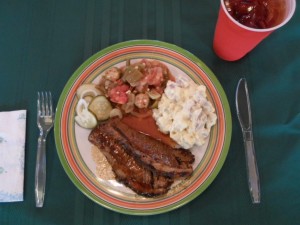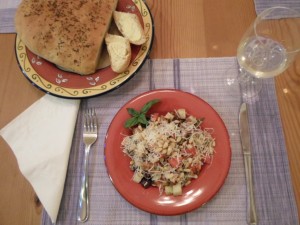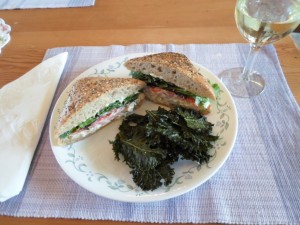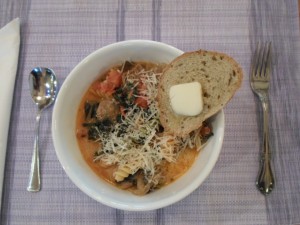
Last weekend’s unseasonably cool weather was truly a blessing. Especially since my husband and I had two grape harvests to attend. Saturday we harvested south of Tyler and stayed to help process the grapes. Sunday we picked Lenoir grapes at our own vineyard on Della Terra Farm. When volunteers help with the harvest, it is always best to feed them and keep them happy – so they’ll want to help again next year.
The day of harvest begins before daylight and isn’t finished until all the grapes are in. Feeding the crew requires planning ahead. Saturday night I prepared a brisket for the crock-pot and made potato salad. I also pre-chopped vegetables for an okra Creole.
The brisket preparation was simple. I trimmed away excess fat and cut the brisket in half to make it fit into my extra-large crock-pot. I made a rub of garlic salt, onion powder, chili powder, cracked black pepper, oregano and celery seeds. I made sure both brisket halves were well coated with the rub. Then I squeezed a small amount of barbecue sauce on the top of each brisket and stacked them in the crock-pot. Placing the lid on securely, I set the temperature on low and the cook-time for 8 hours. Off to bed.
The next morning, the house smelled wonderful. I removed the brisket and let it rest on a cutting board while skimming the fat off the juice. I sliced the brisket thinly across the grain. Then laying the pieces in a shallow baking dish, I topped with reserved juices, covered with foil and placed in a warming drawer – or an oven at a low setting. Time to begin the harvest.
A few hours later while the crew cleaned harvesting forks, buckets, loaded the truck, etc., I escaped to the house to get lunch ready. The previous night I had chopped two onions, three green peppers, four garlic cloves, a large batch of okra (whatever I can do to move the okra) and a gallon bag of tomatoes.
At that point I only needed to heat olive oil in a large pot and sauté the onions, green peppers and garlic. Then I added the chopped okra and tomatoes. Be sure to season with Cajun seasoning, salt and pepper. I reduced the heat to low and let simmer while setting the table for the crew. I cooked the okra Creole about 20 minutes or until the okra was tender. Before serving, I added a handful of chopped fresh basil.
Quite honestly, everything tastes better after hard work and a job well done.






